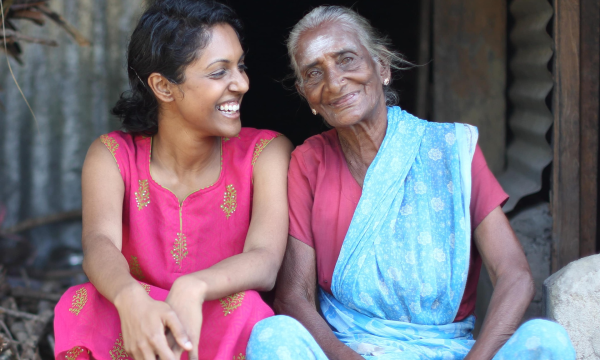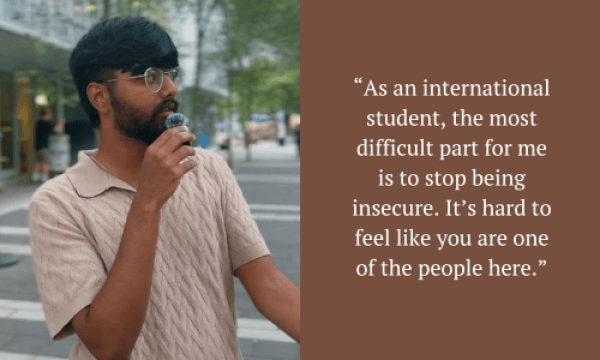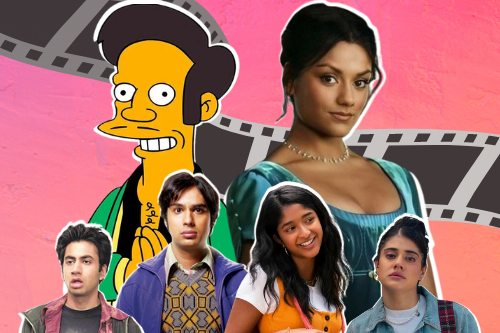
Date on your own terms! myTamilDate.com has been the most trusted dating community for single Tamils around the world for close to a decade! We’re the premiere dating site for diaspora Tamils and have the largest membership base in Canada, USA, UK & more. Join today.
Representation of brown-skinned people has changed a lot in Hollywood. There has definitely been progress made; long gone are the days where a Disney song would refer to the Middle East as a place where “they cut off your ear if they don’t like your face” (yup, those were the actual original lyrics in the Aladdin song Arabian Nights, before they were changed).
For South Asian representation, there have clearly been steps made towards moving away from blatantly stereotypical characters. But what is true “representation” really? I share the views and discourse I have seen everywhere online; that the healthiest representation is one where the character’s ethnicity just isn't that big of a deal, if at all. It’s just there, alongside their many other traits, values and habits. Their ethnicity isn’t central to their character arch or the source of all their problems. And I would say there is still some work to do in this area.
Earlier representation, like the Aladdin lyrics make pretty clear, were often based very openly on South Asian stereotypes. Aside from the brown cab drivers and gas station owners, you had characters like Raj from the Big Bang Theory. His character is an astrophysicist but famously incapable of saying a single word to a woman without the aid of alcohol, often awkwardly staring or stumbling when a woman says anything to him. Similarly, there is Kumail Nanjiani in Silicon Valley, whose character is similarly socially awkward and desexualised around women, his lack of dateability played for laughs. While their “brownness” is not central to their storylines, such stereotypical portrayals are so normalised to us that there is something that seemingly just “makes sense” about having socially incompetent brown nerds starring in shows about geek subculture and the tech industry, as if there would be something missing if they weren’t there. It’s definitely a laugh to watch, but from a representation perspective, it’s pretty obvious that they were only cast in these roles because they fit pre-existing stereotypes about Indian men.
More recently these characters have somewhat evolved, but in an interesting way. Possibly to overcompensate for overtly stereotypical characterisations in the past, brown characters are often developed as being at the complete opposite end of the spectrum; taking the stereotypically obedient, docile, well-mannered and passive brown guy or girl and turning them into chaotic, aggressive, sex-crazed messes who desperately drink and smoke everything in sight, as if to make up for past mistakes. Prime examples of this trope include Harold and Kumar, centred entirely around weed and sex, alongside the familiar stereotypes about studies and medical school. The Maharajah from the Jennifer Aniston film Murder Mystery is similarly over-the-top, adopting what can only be described as a “blaccent” to seem cool and as un-Indian as possible. Kevin Gnapoor from Mean Girls (played by a Tamil actor) is a typical nerdy character, but with a “wannabe tough guy” personality that is so non-threatening it serves as comedic relief more so than a genuine attempt at departing from stereotypical characterisations. It’s his nerdy Indianness that makes his brash aggressiveness hilarious and pitiful rather than something to be taken seriously or explored further.
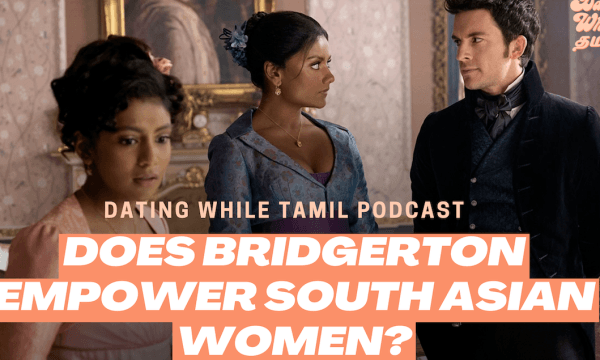 Dating While Tamil Podcast: Does Bridgerton Empower South Asian Women? In this episode Archana & Michelle chat with Ari about the cultural impacts of Netflix's Bridgerton season 2, which stars British-Tamil actresses Simone Ashley and Charithra Chandran. TamilCulture.com
Dating While Tamil Podcast: Does Bridgerton Empower South Asian Women? In this episode Archana & Michelle chat with Ari about the cultural impacts of Netflix's Bridgerton season 2, which stars British-Tamil actresses Simone Ashley and Charithra Chandran. TamilCulture.com Dopinder in Deadpool and Kumail Nanjiani’s character in Stuber both demonstrate another common element of this docile-to-crazy transformation: needing a white man to teach them how to be empowered, tough and sexually confident. Dopinder is shown as a passive pushover who transforms into a hitman “apprentice” and supposedly kills his romantic rival, all thanks to the pitiful boost of confidence he receives from “Pool Sir”. In Stuber, Stu and his white mentor have a more balanced and mutually meaningful relationship; but, he is similarly passive and portrayed as effeminate, until his action-packed day of manning-up with Dave Bautista finally gets him the girl at the end of the movie.
Are these characterisations better than traditional stereotypes? Maybe, but it is also lazy. Breaking stereotypes isn’t necessarily as simple as sucking them all out and flipping them on their heads. Even though these characters are on the opposite end of the spectrum of the passive and docile characters mentioned earlier, they are still fueled by the same stereotypes. It is these stereotypes that allow us to see their geeky quirks, effeminate portrayals, lack of confidence around women, and subsequent passive-to-macho transformations at the hands of a white guy as completely ordinary and sensible. By going out of their way to make these characters as un-Indian as possible, or showing them as capable of shedding their brownness with some help from a tougher white sidekick, the writers make these characters’ ethnicity a central part of their storyline. Again, it’s hilarious, but one-dimensional, and fails to present these characteristics as separate from their race and ethnicity.
Mindy Kaling’s Never Have I Ever is probably the most prominent of recent shows to feature a South Asian actress in a leading role. It is a great show that touches on so many problems that South Asians growing up in Western societies can relate to, a very important part of representation. The character of Devi is given complexity, depth, and a proper storyline; however, from the lens of stereotypical representation, the show falls a bit short. While her character is explored in depth, Devi’s storyline is almost entirely centred on her Indianness, her strict mother’s high academic expectations and emotional distance, her sexual repression and subsequent sexual awakening, and the idea that becoming a cool highschooler requires her to hide her not-so-cool Indian traits. While the show is refreshing in not portraying Devi as just another one-dimensional, studious, passive and quiet brown girl, her Indianness is front and centre, and her repression at home is used in part to justify her anger and obsession with sex.
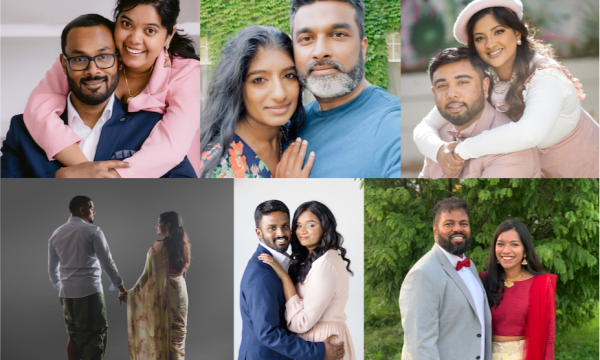 myTamilDate Love Around the World Meet some of the couples who found their perfect match on myTamilDate.com. 😍 TamilCulture.com
myTamilDate Love Around the World Meet some of the couples who found their perfect match on myTamilDate.com. 😍 TamilCulture.com The best form of representation is, in my opinion, one where a complex South Asian character’s storyline and issues are not just tied to their race. They just happen to be brown, while going through the inevitable pitfalls of growing up, teenagehood, or romance. A good example of this is the Australian series Heartbreak High, whose main character Amerie’s Indian heritage is just as unimportant and inconsequential to her character’s development as her classmates’ ethnicities are to them. Another good example (though set in a fictional fantasy land where people of colour are part of the Aristocracy) is Bridgerton’s Kate Sharma, whose Indian heritage is mentioned here and there, but is in no way a significant part of her character. Her love story with a white nobleman could have all the hallmarks of a typical “my parents forbid me from marrying outside my culture” storyline; but in the show, the problems she encounters or her growth as a character have nothing to do with her ethnicity, any overbearing mother or sheltered upbringing. She is also introduced as a confident and intelligent woman, and does not have to be brought out of her shell by her white peers. Shonda Rhimes’ decision to cast a Tamil actress for the role (in place of the original novel’s white character) without feeling the need to add an Indian cultural component or barrier to the story is the type of approach that is needed to break the stereotypes that often define South Asian characters on screen.
There is nothing wrong with having bits and pieces of culture, race and religion within a character’s storyline; after all, those things are a part of every person. The problem comes when these are the only elements of a character that are given airtime, or when every element of a character’s personality is tied to their South Asian ethnicity or overcoming their “Indian problems”. A lot of progress has been made over the years to portray more balanced, nuanced and complex brown characters on screen, but we still have a long way to go.
Let's use South Asian identity as empowerment, instead of using it as something traumatic that needs to be overcome (Hadiyyah Kuma).
Graphic by Sobica Vinayagamoorthy
Sources:
Listen to our new podcast 'Identity'!
Shakthi / Theatre, Intergenerational Trauma and Australian Tamil Identity
Identity Podcast: Anuk/ Language, Grief and Tamil Community
Maral/ Art, Belonging & Armenian-Iraqi-Canadian Identity







